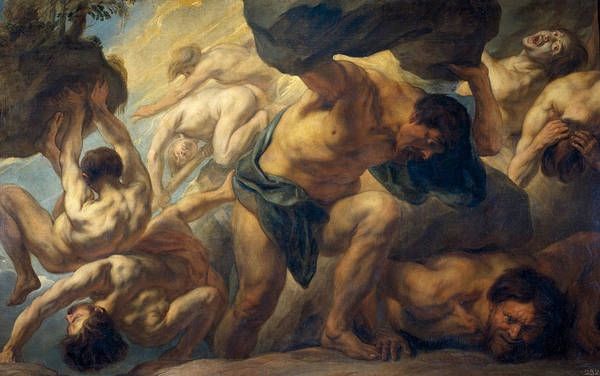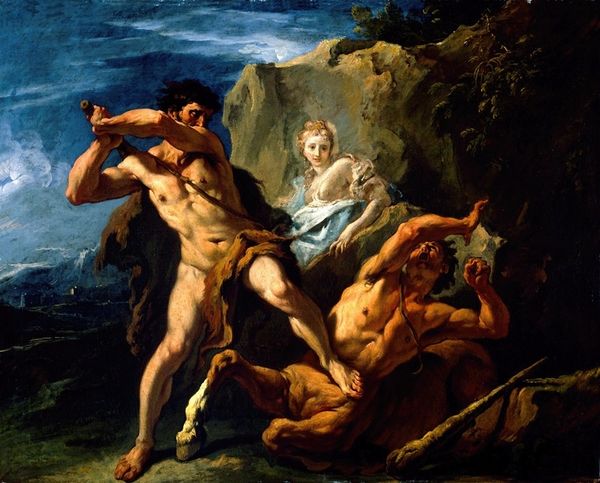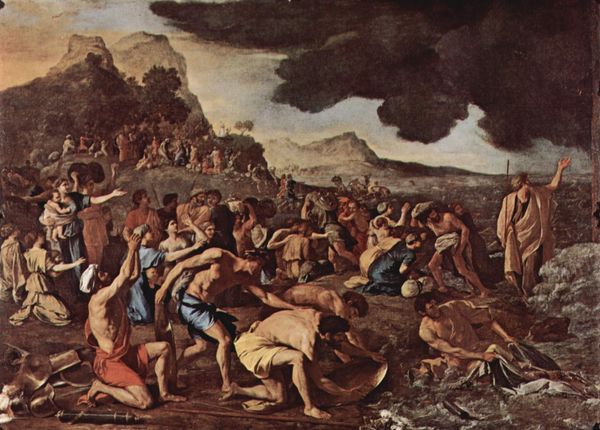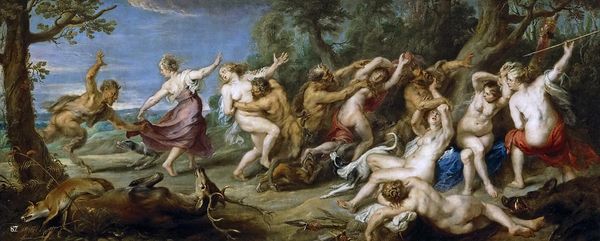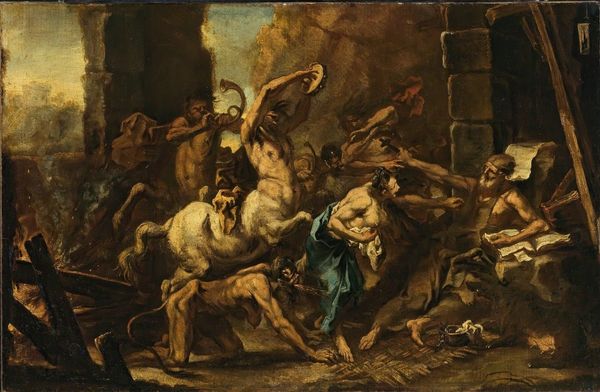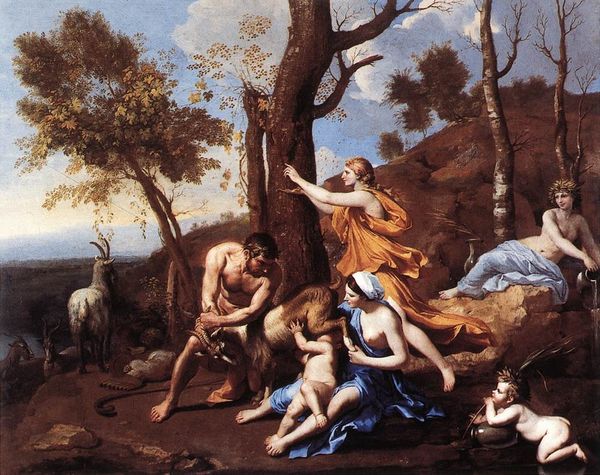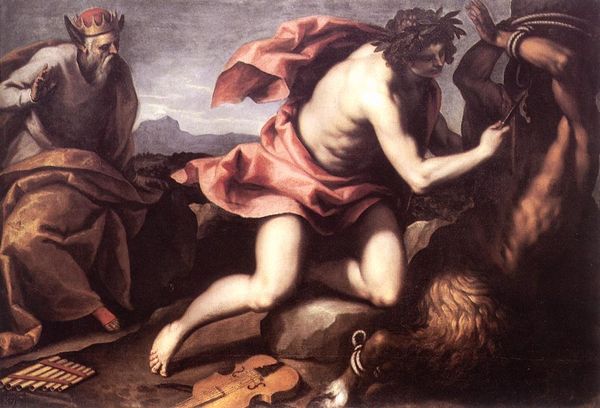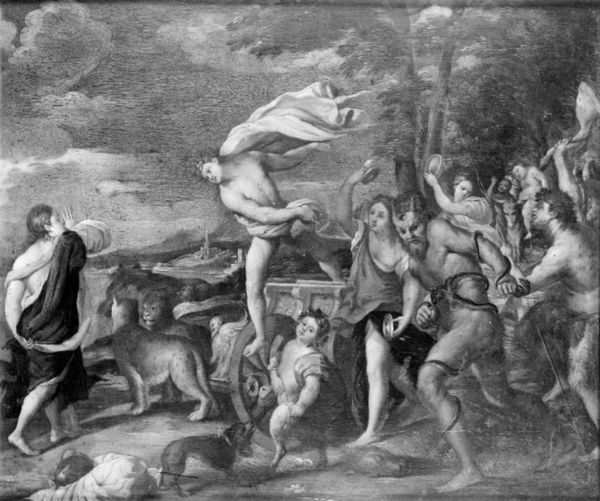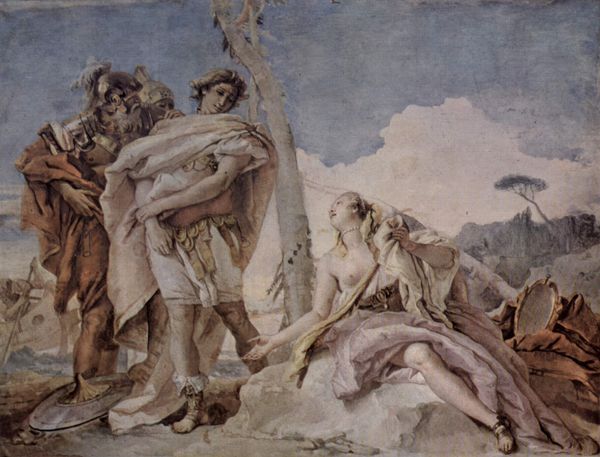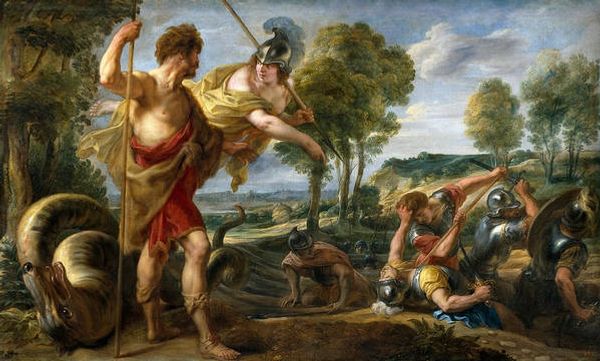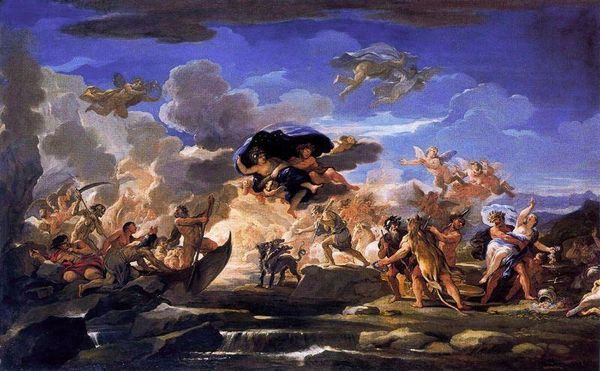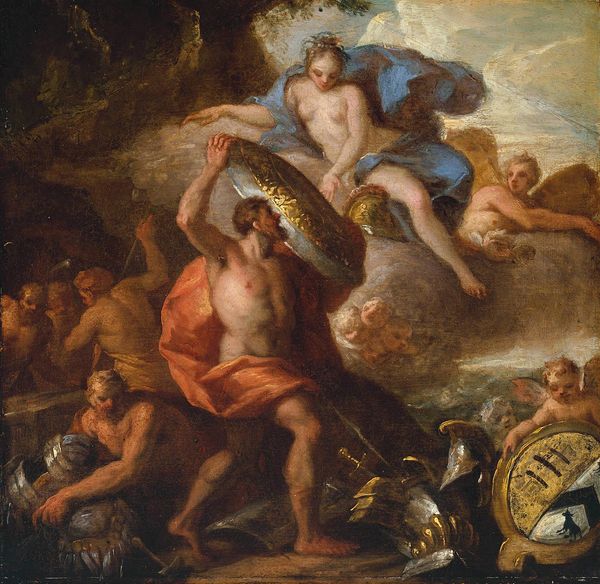
Slaves stopping a horse, study for The Race of the Barbarian Horses 1817
0:00
0:00
theodoregericault
Musée des Beaux-Arts de Rouen, Rouen, France
painting, oil-paint
#
allegory
#
animal
#
fantasy art
#
painting
#
oil-paint
#
landscape
#
figuration
#
romanticism
#
horse
#
mythology
#
human
#
history-painting
#
nude
Dimensions: 60.5 x 48.5 cm
Copyright: Public domain
Curator: Welcome. We’re standing before "Slaves stopping a horse, study for The Race of the Barbarian Horses," an oil-on-canvas work painted in 1817 by Théodore Géricault. It is held at the Musée des Beaux-Arts de Rouen, in France. Editor: My first impression is chaos held in check. It's a surge of muscular bodies and a powerful animal, but somehow the composition feels carefully restrained, almost theatrical. Curator: Indeed. This work depicts slaves attempting to control a wild horse. Horses in art carry so much symbolic weight, from power and virility to freedom and untamed nature. Here, we see figures attempting to impose their will on that power. Editor: Look at the straining sinews, the sweat almost palpable! You can practically feel the texture of the horse's coat and the resistance in those taut ropes or reins. What kind of social commentary do you think Géricault was making? Curator: Given Géricault's context, and Romanticism's fascination with the exotic and the struggle against oppression, one can read it as an allegory for the challenges to freedom, be they social, political, or personal. There are layers upon layers of mythic struggles unfolding here. Editor: I am more taken by how Géricault employed oil paint to convey action. Note how the brown in the background extends to the center; there isn't a clear delineation, implying motion is still possible. He seems fascinated by how material—both flesh and the horsehair—is forced into specific positions. The figures work as machines of labor. Curator: He certainly captured the dynamism! His skillful composition directs our eyes towards the central conflict. The classical allusions of these muscular male nudes are further intensified by their brutal subjugation of the beast before them, like figures from a distant mythological drama. Editor: Well, beyond that, the sheer physical demands evident in the materials and the forms communicate something important. It pushes beyond a static representation toward revealing exertion as work. Curator: Agreed, that physicality makes the scene so evocative, and invites different kinds of historical analysis to surface. The artwork continues to inspire different reactions. Editor: Definitely. Géricault understood something essential about bodies in conflict and tension, both material and metaphorical. It is palpable here.
Comments
No comments
Be the first to comment and join the conversation on the ultimate creative platform.
